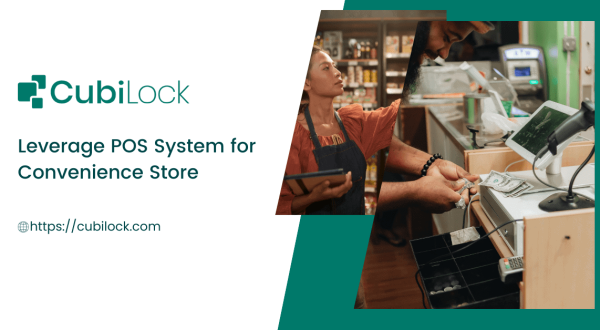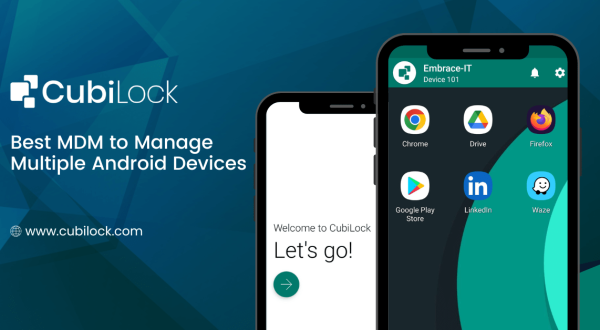The Benefits of Geo-Fencing in Device Management Solutions
- July 19, 2023

Businesses and organizations in today’s world rely heavily on technology and devices for various purposes. From smartphones and tablets to laptops and IoT devices, the proliferation of these devices has led to the need for effective management solutions. One such solution gaining traction is geo-fencing in device management. Geo-fencing is a powerful tool that allows organizations to define virtual boundaries and control the behavior of devices within those boundaries. In this blog post, we will explore the benefits of geo-fencing is and what it brings to device management, including enhanced security, improved productivity, and efficient asset tracking.
What is Geo-Fencing?
Geo-fencing is a location-based technology that enables organizations to create virtual boundaries or geographic zones. These zones are defined using GPS coordinates or Wi-Fi signals and can be as large as an entire city or as small as a specific room within a building. Once the boundaries are established, organizations can set up rules and triggers to control the behavior of devices within those boundaries.
Geo-fencing technology works by using a combination of GPS, cellular data, Wi-Fi, or RFID (Radio-Frequency Identification) to determine the location of a device. When a device enters or exits a predefined geo-fenced area, it triggers a specific action or set of actions. These actions can range from sending notifications or alerts to locking or unlocking device features or even initiating automated processes.
The Benefits of Geo-Fencing in Device Management Solutions
- Enhanced Security
Security is a top concern for any organization, and geo-fencing technology can play a crucial role in bolstering device security. By implementing geo-fencing, organizations can ensure that devices operate only within specified locations or zones. Any attempts to use or access devices outside these predefined areas can trigger alerts or restrictions, thereby preventing unauthorized access or potential security breaches.
a. Device Theft Prevention: Geo-fencing can help deter device theft and reduce the risk of data breaches. If a device is lost or stolen, administrators can remotely lock or wipe the device to protect sensitive information. Additionally, geo-fencing can be used to create secure zones where devices automatically lock themselves if they leave the designated area, rendering them useless to potential thieves.
b. Compliance Enforcement: In industries with strict compliance regulations, such as healthcare or finance, geo-fencing can ensure that devices are used only in authorized locations. For example, healthcare organizations can restrict access to patient data to within the hospital premises, reducing the chances of data leakage or privacy violations.
c. Unauthorized App and Website Restrictions: Organizations can restrict access to specific applications or websites based on location is one of the importance of geo-fencing. This feature is particularly useful in environments where employees should only have access to work-related apps and sites while within the office premises, minimizing distractions and potential security risks.
Also read: What is website whitelisting
- Improved Productivity
Geo-fencing technology can significantly enhance productivity by enabling organizations to streamline operations and optimize device usage. By leveraging the location-based advantages of geo-fencing, organizations can automate tasks and ensure devices are used efficiently.
a. Automated Device Configuration: With geo-fencing, devices can be automatically configured based on their location. For instance, when an employee enters the office premises, their device settings can adjust accordingly, connecting to the office Wi-Fi, activating work-related apps, and disabling personal applications. This automation eliminates the need for manual configuration and allows employees to focus on their work immediately.
b. Time and Attendance Tracking: Geo-fencing solution can be leveraged for time and attendance tracking, especially for remote or field-based employees. By creating geofenced check-in points, organizations can accurately record when employees arrive at specific locations or client sites, ensuring accurate time tracking for payroll purposes. This eliminates the need for manual timesheets and reduces administrative overhead.
- Efficient Asset Tracking
Geo-fencing can be a valuable asset-tracking tool, helping organizations keep track of their valuable devices and equipment. By implementing geo-fencing in device management solutions, organizations can monitor the movement of devices and receive alerts if they are moved outside designated areas.
a. Device Inventory Management: Organizations with large device inventories can benefit from geo-fencing for efficient inventory management. By tracking the location of devices in real-time, administrators can easily identify devices that are in use, in storage, or potentially lost or stolen. This streamlines the inventory management process, reduces costs, and ensures optimal utilization of resources.
b. Geographically Restricted Devices: Some devices may be limited to specific regions or countries due to regulatory or licensing requirements. Geo-fencing alerts can prevent devices from being used in unauthorized locations, ensuring compliance with regional restrictions and minimizing legal risks.
c. Preventative Maintenance and Servicing: Geo-fencing can help organizations track the location and usage patterns of devices, enabling proactive maintenance and servicing. By analyzing device movement and usage data, organizations can schedule maintenance or servicing tasks when devices are in convenient locations, minimizing downtime and optimizing device performance.
Conclusion
Geo-fencing in device management solutions offers a wide range of benefits to organizations across various industries. The advantages of geo-fencing are substantial, from enhanced security and improved productivity to geographically tailored experiences and efficient asset tracking. By leveraging the power of location-based technology, organizations can optimize device usage, strengthen security measures, and provide personalized experiences to users. As technology advances, benefits of geo-fencing are likely to become an increasingly integral component of device management strategies, enabling organizations to stay ahead in a rapidly evolving digital landscape.

Device Security Analyst, loves testing devices that are used for dedicated purposes.







